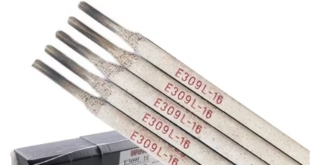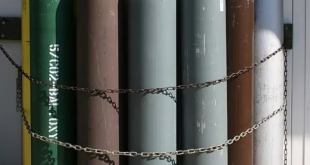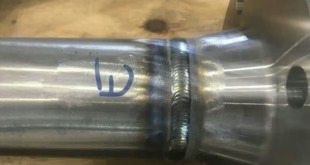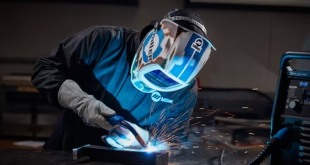Potential of Buttering in Welding: Strength, Restoration, and Beyond
Introduction
Welding is an indispensable process in the world of manufacturing and construction. It involves joining two or more pieces of metal to form a single, cohesive unit. However, the art of welding goes beyond mere fusion; it includes various techniques to enhance the structural integrity, appearance, and performance of welded joints. One such technique is “buttering in welding.” Buttering is a versatile method that involves depositing a layer of weld metal onto the base metal, typically along the edges or surfaces of the joint, before the actual welding process begins. This technique has proven to be invaluable in various welding applications, offering benefits such as increased strength, restoration of worn-out components, joining dissimilar metals, and stress relief during welding.
In this comprehensive guide, we will explore buttering in welding in great detail, understanding its principles, applications, procedures, and the science behind its effectiveness. By the end of this article, you’ll have a thorough grasp of how buttering can be a game-changer in your welding projects, whether you’re a professional welder, an aspiring enthusiast, or someone simply curious about the world of welding.
Understanding Buttering in Welding
To comprehend the significance of buttering in welding, let’s begin by breaking down the core concepts of this technique.

What is Buttering in Welding?
Buttering in welding is a strategic method that involves the deposition of a layer of weld metal onto the base metal, typically along the edges or surfaces of the joint, before initiating the primary welding process. The deposited layer is often referred to as the “butter layer,” and it serves various purposes in different welding applications.
The Science Behind Buttering
The effectiveness of buttering lies in its ability to create a strong, cohesive bond between the base metal and the filler material. This is achieved through proper fusion and metallurgical compatibility. To understand the science behind buttering, we must delve into the fundamental principles that make it work.
- Metallurgical Bonding: Welding is all about creating a strong metallurgical bond between two metal pieces. Buttering enhances this bond by providing a transition layer that bridges any potential gaps or inconsistencies in the joint.
- Fusion and Heat Distribution: Buttering allows for controlled fusion between the base metal and filler material. This controlled fusion is crucial for achieving uniform heat distribution, which is essential for a sound weld.
- Reducing Stress and Distortion: By applying multiple layers of weld metal during buttering, thermal stress during welding is distributed more evenly. This reduces the risk of cracking and distortion in the final weld, ensuring structural integrity.
Applications of Buttering in Welding
Now that we’ve laid the groundwork for buttering, let’s explore the various applications of this technique. Buttering is a versatile tool in a welder’s arsenal, and it can be applied in a multitude of scenarios.
Building Up for Strength
One of the primary purposes of buttering is to increase the thickness or width of the joint by adding material to the base metal. This process creates a broader weld profile, leading to stronger welds and better fusion between the base metal and the filler material.
- Enhancing Structural Integrity: When the load-bearing capacity of a joint needs to be increased, buttering is often employed. It is a common practice in structural welding, where the integrity of the welded structure is of utmost importance.
- Critical Applications: In industries such as aerospace, automotive, and heavy machinery, buttering is frequently used to reinforce joints in components subjected to high levels of stress.
Repair and Restoration
Buttering is a valuable technique when it comes to repairing or restoring worn-out or damaged parts. By adding material through buttering, welders can restore the original dimensions of the component, enhancing its strength and extending its lifespan.
- Component Revival: In industrial settings, machinery and equipment often experience wear and tear over time. Buttering offers a cost-effective solution to bring these components back to their original specifications.
- Saving Time and Resources: Rather than replacing entire components, buttering allows for targeted repairs, saving both time and resources.
Joining Dissimilar Metals
In some welding projects, it’s necessary to join dissimilar metals. This can be a challenging task due to differences in melting points, thermal expansion coefficients, and metallurgical incompatibility. Buttering serves as a crucial step in these scenarios.
- Creating a Transition Layer: When joining dissimilar metals, buttering creates a transition layer between the two materials. This intermediate layer minimizes the formation of brittle intermetallic compounds and improves the bond between the dissimilar metals.
- Specialized Applications: Industries like marine engineering, where saltwater corrosion is a significant concern, often involve the welding of dissimilar metals. Buttering is instrumental in ensuring the durability of these joints.
Stress Relief
Buttering can also act as a stress-relieving technique. By applying multiple layers of weld metal, thermal stress during welding is distributed more evenly. This reduces the risk of cracking and distortion in the final weld, ensuring a structurally sound outcome.
- Stress Distribution: In large or intricate welding projects, thermal stress can lead to warping or distortion in the welded components. Buttering helps distribute this stress uniformly, reducing the risk of defects.
- Minimizing Post-Weld Heat Treatment: In some cases, buttering can reduce or eliminate the need for post-weld heat treatment, saving time and energy.
Buttering Procedure and Best Practices
To successfully implement buttering in welding, one must follow a set of procedures and best practices. Let’s take a closer look at the steps involved in buttering.
Preparation
- Base Metal Preparation: The first step is to prepare the base metal. This may involve cleaning the metal to remove any contaminants, rust, or oxidation. In some cases, preheating the base metal might be necessary to ensure proper fusion during the buttering process.
- Environmental Considerations: The welding environment is critical. Factors like humidity, temperature, and air quality can impact the quality of the weld. Welders must ensure that the conditions are suitable for the specific welding process being used.
Matching Welding Process and Filler Material
- Choosing the Right Welding Process: The welding process chosen for buttering should be compatible with the base metal and the intended application. Common welding processes for buttering include shielded metal arc welding (SMAW), gas tungsten arc welding (GTAW), and gas metal arc welding (GMAW).
- Selecting Filler Material: The choice of filler material is crucial for the success of buttering. The filler material should have the same or similar composition to the base metal to ensure a strong metallurgical bond.
Deposition
The actual deposition of the butter layer is a critical step in the buttering process. Welders need to use specific techniques to achieve the desired results.
- Controlled Layering: Buttering often involves depositing multiple layers of weld metal onto the prepared surface. Welders must ensure that each layer is deposited evenly and without defects. The layer thickness and width should align with the project’s requirements.
- Preventing Porosity: One common issue in welding is the formation of porosity in the weld. Porosity can weaken the joint and compromise its integrity. Care must be taken to avoid porosity when depositing the butter layer.
- Quality Control: Inspecting the butter layer during deposition is crucial. Welders should look for signs of proper fusion, uniformity, and cleanliness. Any defects should be addressed promptly to maintain the quality of the buttered surface.
Advanced Buttering Techniques
While the basic buttering process provides significant benefits, advanced techniques and materials have been developed to further enhance the capabilities of buttering in welding.
Cladding
Cladding is an advanced buttering technique that involves depositing a layer of material with specific properties onto the base metal. This is often done for specialized applications where corrosion resistance, wear resistance, or other specific characteristics are required.
- Corrosion Resistance: Cladding can be used to add a layer of corrosion-resistant material to a base metal, protecting it from harsh environments such as chemical processing or offshore drilling.
- Wear Resistance: In industries where components are subjected to high levels of wear, cladding can be used to reinforce the surface and extend the component’s lifespan.
Laser Cladding
Laser cladding is a precise and efficient method of depositing a layer of material onto the base metal using a high-energy laser beam. This technique allows for extremely controlled deposition and is commonly used in high-precision applications.
- Precision Engineering: Laser cladding is frequently used in industries like aerospace and medical device manufacturing, where precision and minimal distortion are critical.
- Minimal Heat-Affected Zone: The localized and controlled nature of laser cladding results in a minimal heat-affected zone, reducing the risk of distortion and heat-related defects.
Automated Systems
As technology advances, automated systems are increasingly being used for buttering in welding. These systems use robots or computer-controlled machinery to deposit the butter layer, offering high precision and consistency.
- Repeatability: Automated systems can repeat the buttering process with exceptional precision, making them ideal for high-volume production.
- Reduced Labor Costs: Using automated systems can reduce labor costs and increase efficiency, especially in large-scale manufacturing.
Challenges and Considerations
While buttering in welding offers numerous advantages, it is not without its challenges and considerations. Welders must be aware of potential issues and take steps to mitigate them.
Metallurgical Compatibility
Ensuring that the base metal and filler material are metallurgically compatible is critical for the success of buttering. Welders need to carefully select the right filler material and understand the metallurgical properties of both the base metal and the filler.
Contamination and Cleanliness
Contamination, such as rust, oil, or dirt on the base metal, can negatively impact the quality of the butter layer. Proper cleaning and surface preparation are essential to avoid defects and ensure a strong bond.
Quality Control
Maintaining quality control throughout the buttering process is crucial. Regular inspections, non-destructive testing, and defect identification and correction are all part of the quality control process.
Health and Safety
Welding, including buttering, involves various safety considerations. Proper personal protective equipment (PPE), adequate ventilation, and safe handling of welding equipment are essential for the well-being of welders and those working in the vicinity.
Environmental Impact
Welding processes, including buttering, can have environmental implications, particularly regarding emissions and waste. Implementing environmentally friendly practices and technologies, such as reducing emissions and recycling materials, can mitigate the environmental impact of welding.
Future Trends and Innovations
The world of welding is continually evolving, and buttering is no exception. Several future trends and innovations are shaping the way buttering is conducted and its potential applications.
3D Printing and Additive Manufacturing
Additive manufacturing, including 3D printing, is revolutionizing the way components are produced. Welding techniques, including buttering, are being integrated into additive manufacturing processes to enhance the properties of printed parts.
- Customization: Additive manufacturing allows for the customization of components, and buttering can be used to reinforce specific areas for added strength or other properties.
- Complex Geometries: Additive manufacturing often produces complex shapes and geometries. Buttering can help ensure that these structures maintain structural integrity.
Nanotechnology and Nano-Enhanced Materials
Nanotechnology is opening up new possibilities for enhancing the properties of materials used in welding, including filler materials. Nano-enhanced materials can provide superior strength, durability, and other desirable characteristics.
- Enhanced Performance: Nano-enhanced materials are being used in buttering to create welds with exceptional performance characteristics, including increased strength, wear resistance, and corrosion resistance.
- Lightweight Structures: In industries like aerospace and automotive, where weight reduction is critical, nano-enhanced materials are being employed in buttering to create lightweight yet robust structures.
Automation and Robotics
The automation of welding processes, including buttering, is expected to continue to advance. Advanced robotics and artificial intelligence are being used to improve precision and efficiency in welding operations.
- Remote Welding: Robotics can enable remote welding operations, allowing for welding in hazardous or hard-to-reach environments.
- Consistency: Automation ensures consistent weld quality, reducing the risk of defects and improving overall efficiency.
FAQs
What is the process of buttering metals?
Buttering in welding is the process of depositing a layer of weld metal onto the base metal before the main welding operation to strengthen, repair, or join metals effectively.
What is the difference between buttering and build up in welding?
Buttering is adding material along edges or surfaces before welding, while build-up involves adding material to reshape or repair a worn component after welding.
What is the difference between cladding and buttering?
Cladding is adding a specific layer to enhance properties, such as corrosion resistance, while buttering is a pre-welding layer used for strength and bonding.
What is the importance of welds?
Welds are crucial for joining metals, creating strong and reliable connections in various industries, from construction to manufacturing.
What is buttering in welding?
Buttering in welding is the technique of applying a preliminary layer of weld metal on the base metal before the main welding process to achieve specific goals.
What are the advantages of buttering in welding?
Advantages of buttering include enhanced strength, restoration of worn parts, joining dissimilar metals, stress relief, and improved structural integrity.
What thickness is a buttering weld?
The thickness of a buttering weld can vary based on the application and requirements, but it’s typically a few millimeters to several millimeters thick.
Conclusion
Buttering in welding is a versatile technique that plays a vital role in various welding applications. Whether it’s strengthening joints, restoring components, joining dissimilar materials, or reducing stress during welding, buttering offers a myriad of advantages. As welding technology continues to evolve and new innovations emerge, the potential applications of buttering are only expanding. For welders and professionals in related industries, mastering the art of buttering can unlock a world of possibilities, enabling them to create stronger, more resilient, and longer-lasting structures and components.
In short, buttering in welding is not just a technique; it’s a skill, an art, and a science. It’s a testament to human ingenuity and our ability to manipulate materials to achieve our goals. Whether in construction, manufacturing, or repair, buttering is a powerful tool in the hands of skilled welders, helping build a better, more connected world.
 Welding of Welders All about Welding and Welders
Welding of Welders All about Welding and Welders



